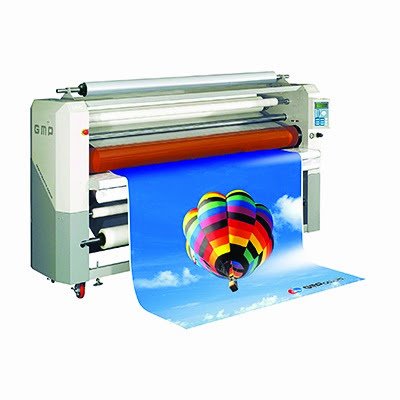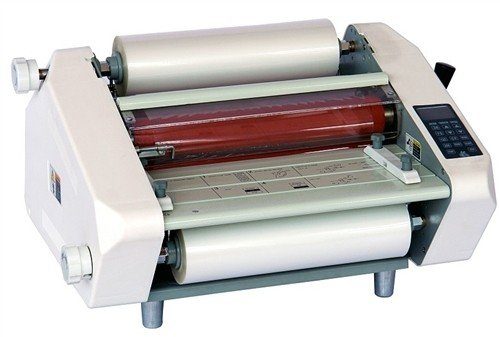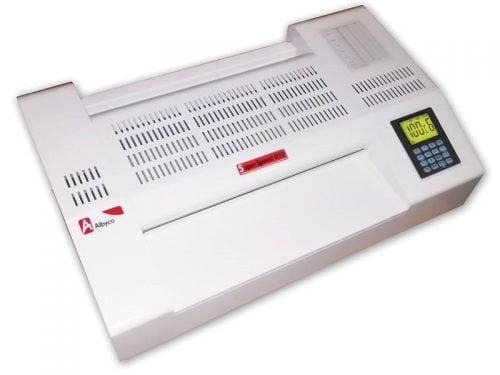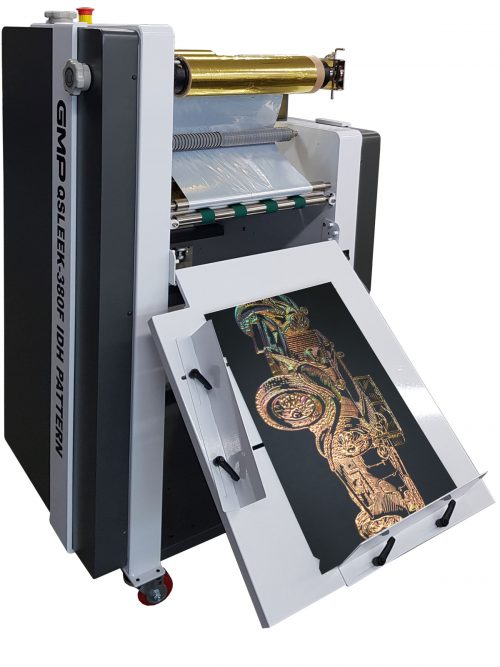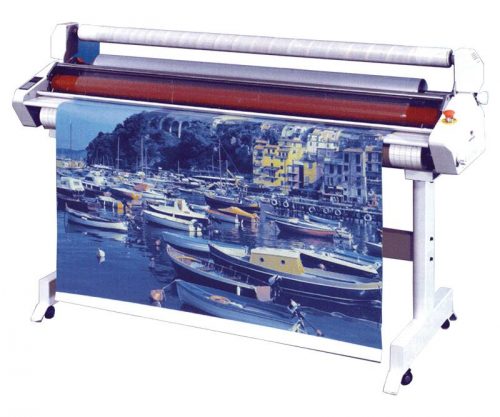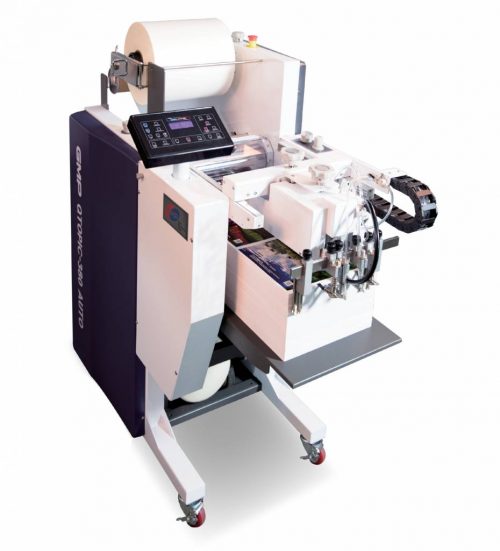Laminating/plasticizing
Albyco offers the widest range of laminators and laminating materials. We can help you through the different laminating methods, the laminatingproces and the assortment pouches and laminating rollers.
Lamination
Laminating protects against moisture and dirt. Laminated documents last longer. Laminating often gives a more beautiful contrast to your images.
When laminating a transparent plastic layer is applied on paper. The best known form is hot lamination, wherein the thermal adhesive between the plastic pouch, by means of heating (approx. 100 0C) is melted. This adhesive melts partly in the paper and fills the irregularities in the paper. This bonding is strong. Laminating with pouches or laminatingsheets is always two-sided. The paper is inserted between the laminatingsheets. Around the paper, there is still an edge of laminating film, normally about 3 mm. This edge provides a watertight seal of the document.
Different types of laminating
We divide different types of lamination / plastification. Each goal has its own specific laminating material.
Pouch/sheet lamination:
The most common form, paper with a standard A-size, from business cards up to A2, is inserted in a pouch or laminatingsheet. This package will be inserted into a pouch-laminator. Heated transport rollers melts the glue between the PET-plastic and the papersheet, slowly and evenly. The roller presses the melted glue firmly into the paper and transports the pouch, controlled by the machine.
For lamination with laminatingpouches a pouchlaminator is used. For example, it is widely used for menus, photos or intensive used documents. The machines are easy to use and the choice of materials is large. Pouches are available in all A-sizes up to A2 and many other useful formats, such as business cards and displays with a gross A4 size. Pouches are available in different thicknesses ranging from 68 to 250 microns. Pouches are available in a bright glossy finish or with a matt finish.
In addition to these standard pouches there are also a number of specials in the program. Filex example, a pouch with a 4-hole multo-perforation makes it a perfect solution for creating custom tabs. Furthermore Albyco supplies self-adhesive pouches, a particularly convenient solution to make your own stickers.
Pouchlamination is in practice only be applied hot. Cold Laminating with pouches is very rare.
Roll-laminating, two-sided:
Lamination with laminating rolls is a very different discipline. A roll-laminator has two rolls with laminatingfilm, one above and one below. This film is fed through the machine with heated conveyor rollers. From the feeding table sheets of paper are inserted between the first set of transport rollers. The laminatingfilm + paper is been fed through the machine. The following papersheets are now continuously inserted in the machine, with a small spacing for the encapsulation. The laminated sheets come as a long film out of the machine. They have to be separated from eachother. Roll-laminating is used for large volumes of the same kind or for custom sizes or large formats.
Roll laminating is use for hot ánd cold laminating. Hot laminating, based on PET, is used for indoor applications as posters i.e. Cold laminating, based on PVC, is applied for outdoor use. PVC has a natural ability to block UV light, which lasts your prints longer. PVC comes with different adhesive types, each for a specific need. PVC laminating film is provided with a protective backingsheet. Prior to laminating the film of this must be removed and rolled up on a winding roller at the machine.
Roll-laminator is commonly used for mounting to various types of signmaterials.
Single-sided laminating:
Single-sided lamination is a much more complicated process than what one thinks generally. Simply laminating film applied to one side will automatically lead to a highly curled paper, caused by cooling and greater shrinkage efficient, compared to standard laminatingfilm and paper. Systems for single-sided lamination (POD laminators for Printing On Demand) therefore are somewhat more advanced in another; includes a decurlingdevice and auto sheetseparation. Because this one-sided laminators are often used in heavy production environments speed is an significient factor. In order to ensure a constant temperature, induction heating is being used at a higher speed. For trouble-free operation Heidelberg feeder components and PLC-tech controllers of Siemens are often used. Together with this program POD-laminators, Albyco offers an innovative selection laminatingfilms, based on BOPP or nylon, suitable for all-sided laminators and for all types of substrates, ink and all printerbrands.
We are aware that the above perhaps raises more questions than answers. Therefore, don’t hesitate to contact Albyco, phone +31 162 486 286 or by e-mail, sales@albyco.com.
